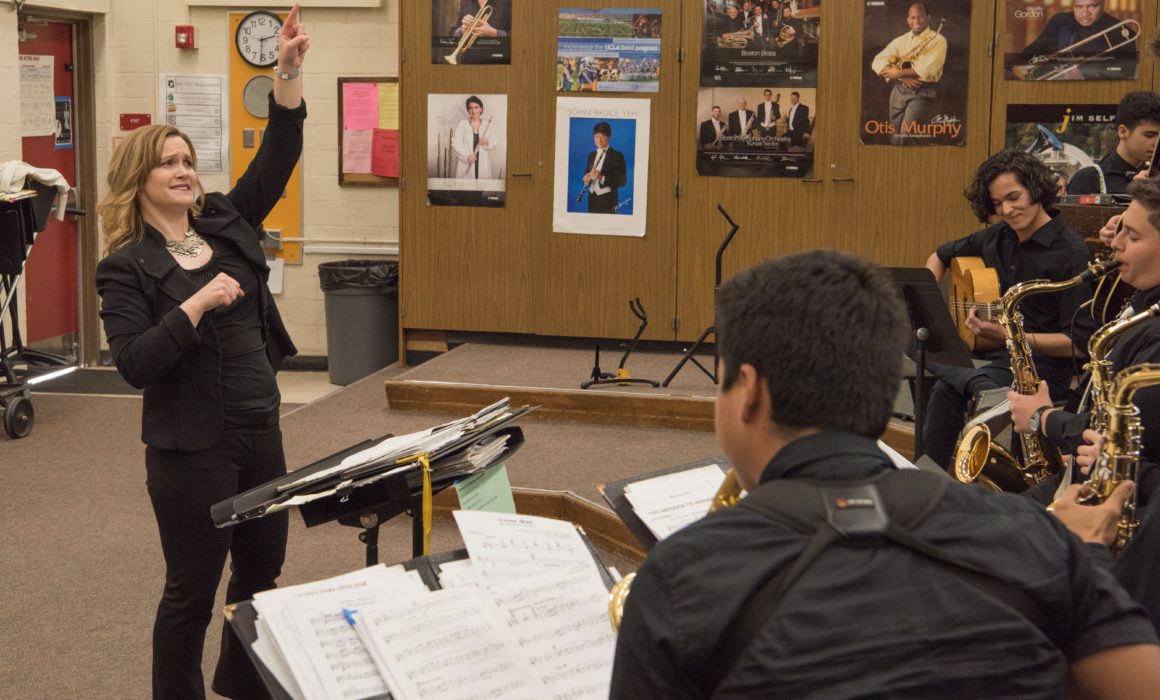
Ding dong, it’s Granny Grammar!
The doorbell rings on Google Meet, and Granny makes her grand entrance. The first graders listen to Granny’s every word.
Their teacher, Maria Parkin, aka “Granny,” says that her new persona is just one of many new tricks to engage students online.
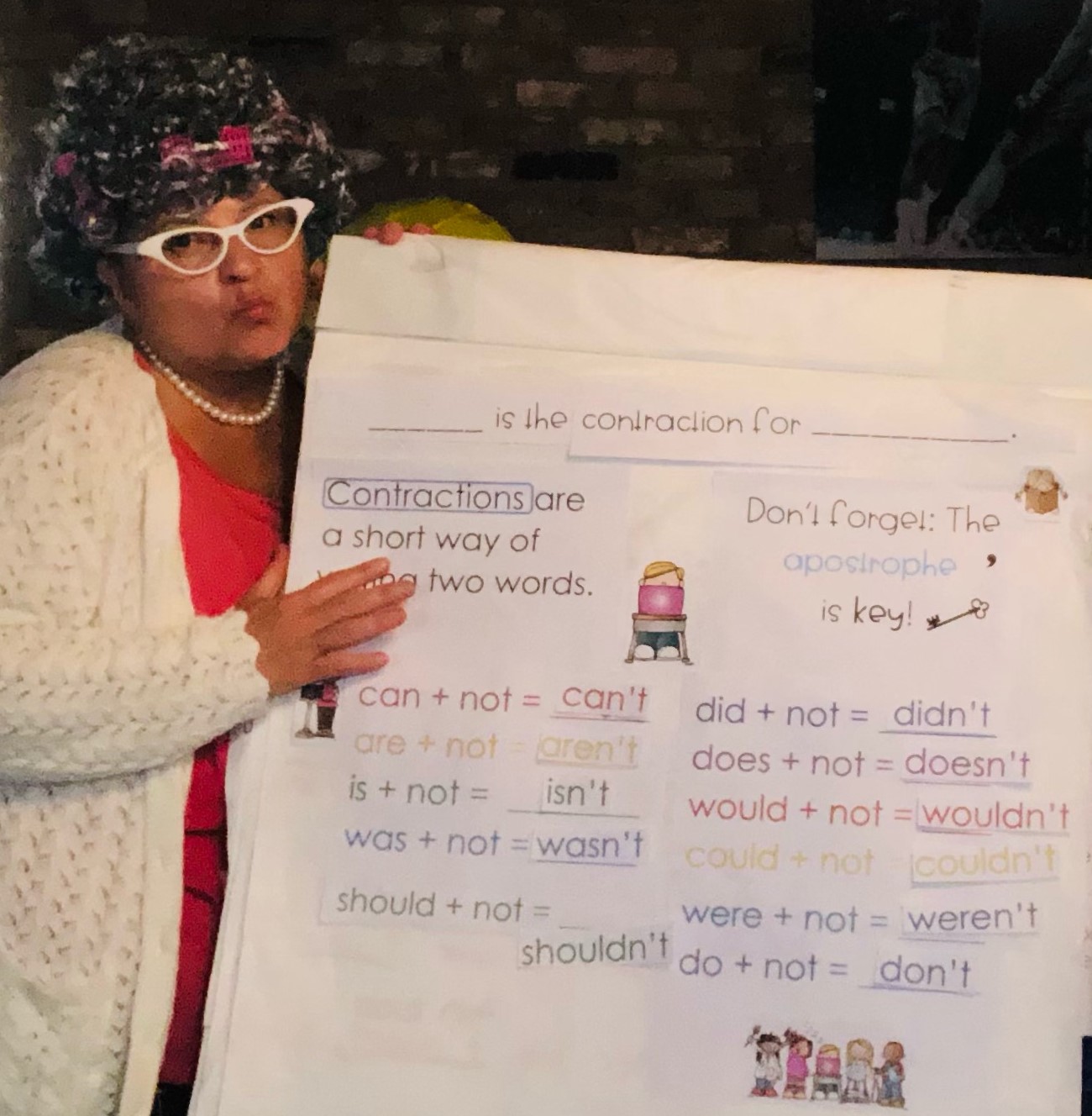
Maria Parkin as Granny Grammar, complete with wig, glasses and pearls.
“When the pandemic first hit, I forced myself to learn new things and think outside the box. It was so challenging. I told myself I had to do it for the kids. And I did.”
To grab their attention online, she created Granny Grammar. She changed her shirt and her voice — and dressed up with a wig, glasses and string of pearls. She didn’t know how it would go over at first, but students loved it. Thanks to Granny, their phonemic awareness and reading comprehension have soared.
“I had to up the ante during distance learning,” says Parkin, a 16-year teacher and member of the Teachers Association of Paramount. “It was much more engaging for them than worksheets.”
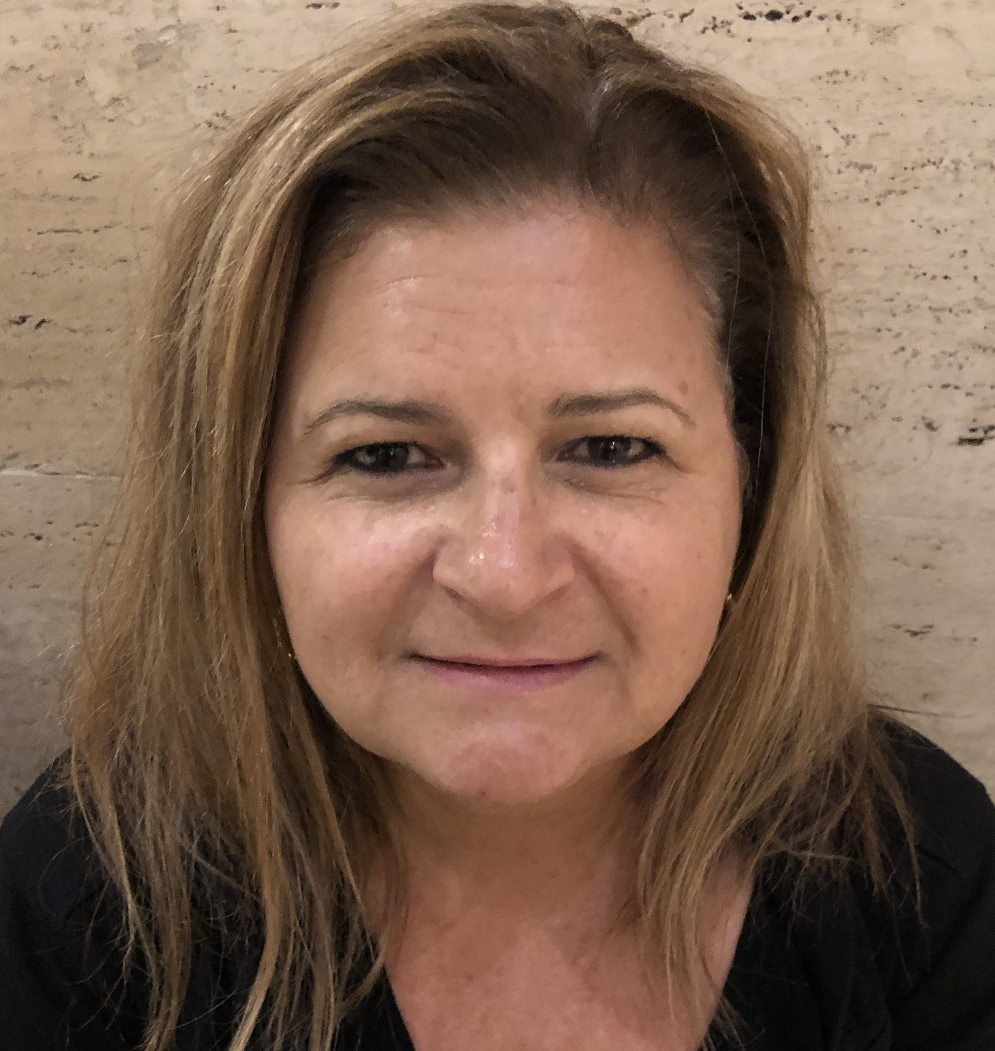
“I forced myself to learn new things and think outside the box. I told myself I had to do it for the kids. And I did.”
—Maria Parkin, Teachers Association of Paramount
Learning new ways of teaching
The pandemic has been difficult, stressful and exhausting. But Parkin, like many school employees, found some positives. She has embraced new styles of teaching that she will continue when in-class instruction resumes this fall. She has become stronger and more confident.
“I will definitely continue asynchronous learning,” she says. “I didn’t do that before. But technology is the way to go. Of course, students still need their teacher. But there is so much that students can do online independently.”
Parkin also plans to keep herself connected online with students when they return to in-person learning via Google Jamboard, a collaborative, digital whiteboard where students and teachers can share ideas in real time. She loves that she can see their work in progress and guide them as they work alone and in groups — and that students can see the work of classmates projected onto a screen at the push of a button.
“Before, it was pretty much paper and pencil,” she says. “Now I have a whole new perspective.”
Jamal Wright, history professor at Bakersfield College, says the pandemic has pushed him to become more technologically savvy, creative and vibrant.
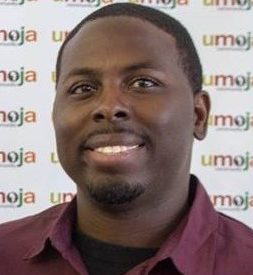
Jamal Wright
“For me, the silver lining was learning how to create information resources for students, so they knew something about a topic before even coming to class,” says Wright, a member of the Kern Community College District chapter of the Community College Association (Kern CCD/CCA).
“I learned how to embed videos in lectures using Canvas. I post lectures with videos that students can watch any time. I engage in ‘flipped learning,’ so students can watch clips of Gladiator before I lecture on the Roman Empire. It develops a deeper understanding of the material. I also create quizzes in Canvas to test for understanding and help them retain information.”
Wright uses his new skills to create and upload videos and posts on how to navigate the campus virtually, submit assignments, communicate with instructors, and access resources like the school’s food pantry. He never imagined himself doing how-to videos and posting links to essential school services, but he now enjoys it.
Isabel Garcia, a science and math teacher at San Benito High School in Hollister, shares that the pandemic provided an opportunity to update outmoded curriculum with colleagues, incorporating technology in a way that’s more accessible for students and teachers. She credits her district and union with providing enough resources for staff to make that leap.
“When our schools closed down physically, we digitized our learning environment very quickly,” says Garcia, a member of San Benito High School Teachers Association. “The sense of urgency made a difference in pushing, promoting and supporting projects we were already working on, including revising curriculum.”
Science teachers now access online simulations that allow students to do interactive experiments remotely and collaboratively with their peers. In chemistry, for example, students can adjust the volume, temperature and mass of ingredients online, re-creating the experience of students sitting at lab tables together.
“We flipped learning by recording our lectures and allowing students to do hands-on learning in simulations during class time,” says Garcia. “The pandemic definitely gave our team a chance to be more creative.”
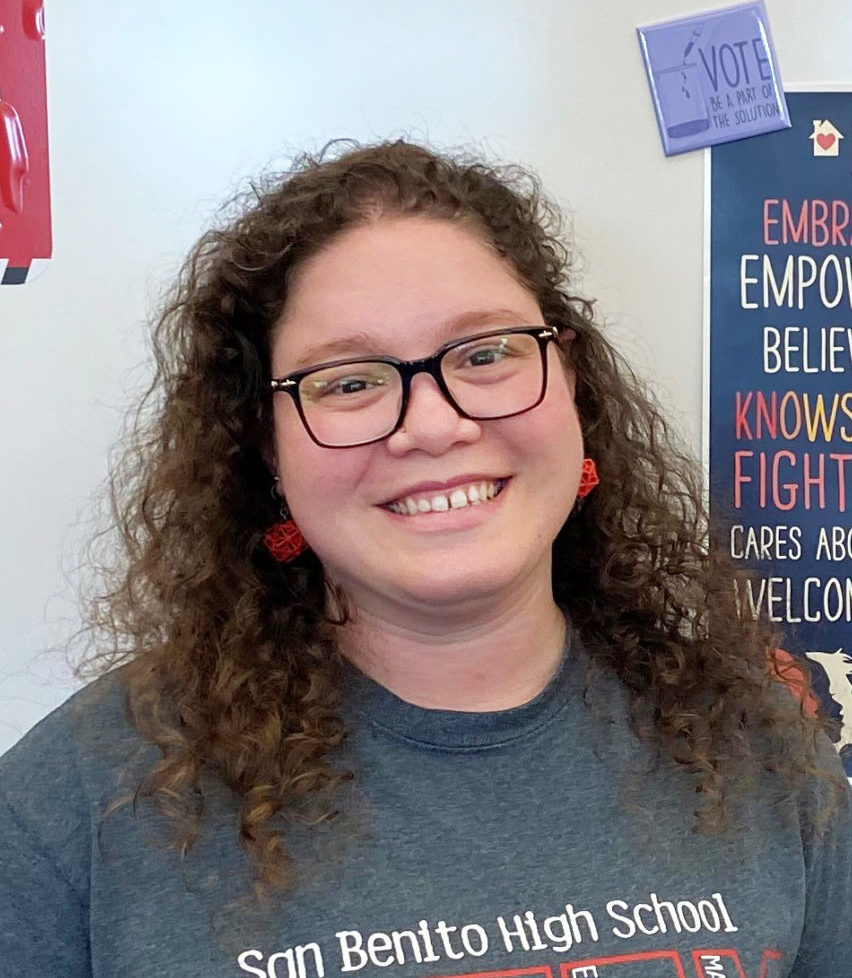
“We are building the plane as we’re flying it. We are learning and growing together, and there is beauty in that.”
—Isabel Garcia, San Benito High School Teachers Association
Embracing professional development
Many who put off voluntary professional development before the pandemic found themselves attending an array of virtual workshops after school and on weekends once schools shut down. The trainings have sharpened their skills.
Wright, for example, attended every workshop available to transition to distance learning, and was excited to become more comfortable with technology.
Garcia helped organize a professional development workgroup called “Fan Favorites” that helped teachers in her district adjust to online instruction. Instead of using the term “best practices,” which can be somewhat intimidating, teachers shared their favorite ways of doing things. The workgroup was a big hit.
“We are building the plane as we’re flying it. If we find something that works, it’s an instant Fan Favorite, which doesn’t have the weighty expectation that comes with being a best practice,” Garcia says. “We ask teachers to share what works for them. We are learning and growing together, and there is beauty in that.”
As Garcia’s district moves to hybrid, these sessions will continue.
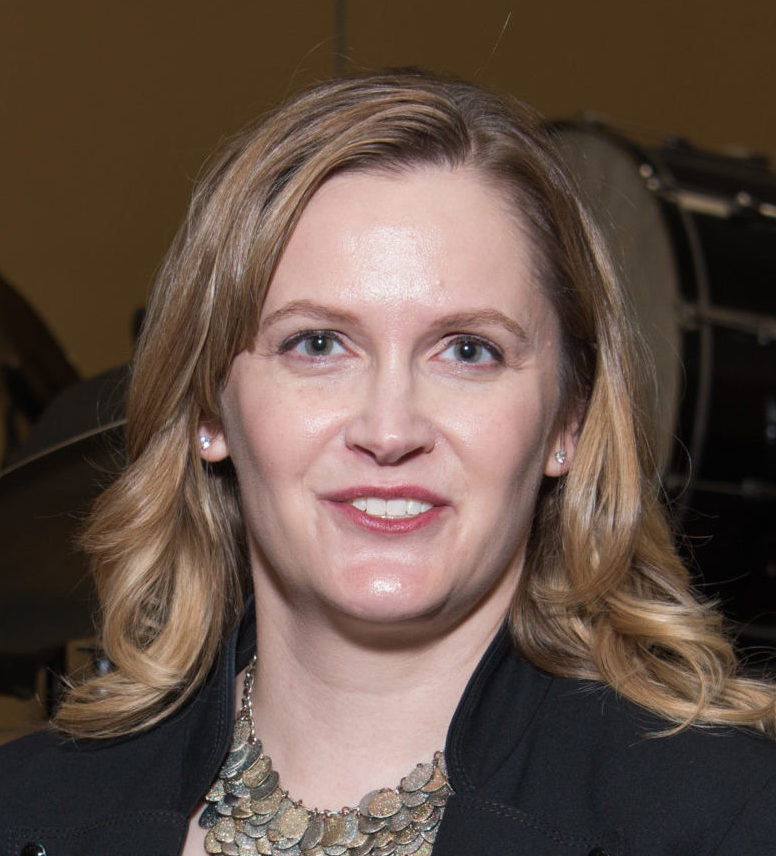
“Maybe because I’ve become a student again, I see things with a fresh eye. I have become more patient with students that struggle.”
—Amy Rangel, Glendale Teachers Association
Becoming open-minded, flexible and patient
Amy Rangel, a music and band teacher at Glendale High School, found herself in a quandary when the pandemic hit. Her students could no longer play together as a group. Playing and practicing music on Zoom or Webex doesn’t work for an orchestra — there are time delays and technical glitches, and it’s hard for the conductor to give directions to a specific section.
Rangel had to shift her thinking. “I still wanted them to have the feeling of playing as a group, so I shared my sound with them and they played their instruments along with me or with a demo recording,” she says. “I couldn’t hear them, but it gave them a sense of not playing alone.”
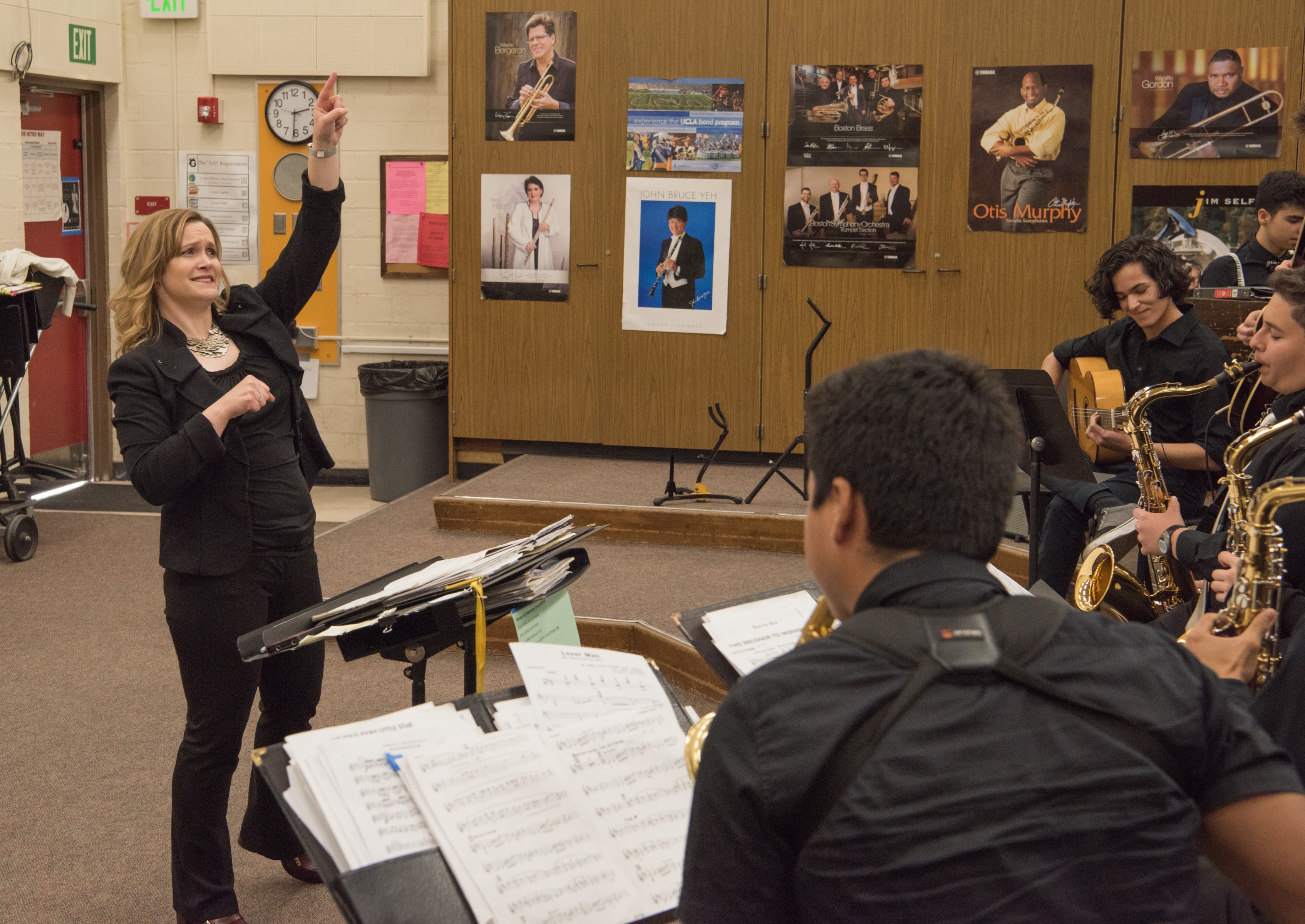
Glendale High music teacher Amy Rangel exhorts her students to ever-higher levels. Photo: Kim Sanford
A member of the Glendale Teachers Association who was honored on The Kelly Clarkson Show and was a finalist for 2019 Music Educator of the Year Grammy, Rangel also added solo projects and music appreciation activities. “My goal was to keep them playing and not just become a paper-and-pencil music class.”
Students made their own choices of music and recorded videos of solo performances. Many were excited about having the freedom to choose what to play, she says.
Rangel became creative with technology. She incorporated MusicFirst, which helps students learn how to read music while performing and creating music, and SmartMusic, a web-based suite of music education tools and home to an online, interactive music library, so students could play their solos with a background track.
“I never would have thought to use these programs before, because it would have seemed like an extravagance,” admits Rangel, who does her own fundraising for instruments and programs. “But now I am more open-minded, and I see them as tools to help students learn.”
Teaching in the pandemic has given Rangel more patience, and she has stopped being hard on herself when things don’t work out as planned.
“Maybe because I’ve become a student again, I see things with a fresh eye. I have become more patient with students that struggle. After the pandemic, we’ll still have concerts, performances and festivals, but it won’t be the be-all and end-all. I want to focus more on students’ progression and have them appreciate music, instead of just being in one performance after another.”
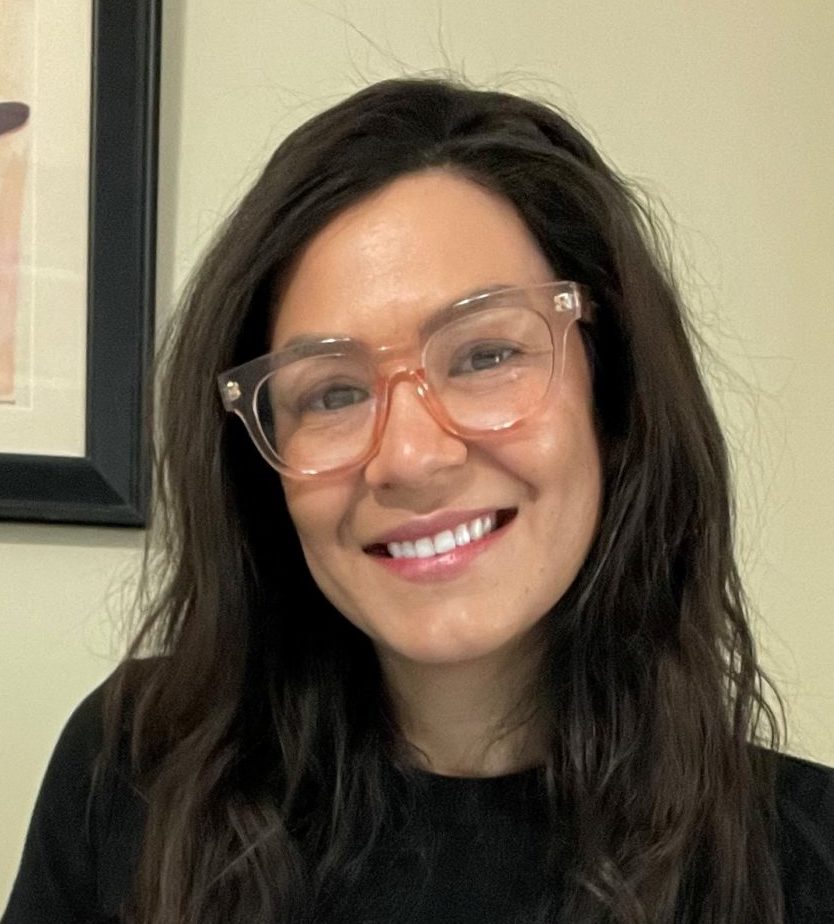
“I am able to be a more compassionate educator without compromising the quality of my classes. I have given myself permission to put my students and their well-being first.”
—Nicole Carrasco, Kern CCD/CCA
Developing more empathy
Nicole Carrasco, a sociology professor at Bakersfield College, says the pandemic has helped her put things in perspective.
“The world of higher education can be a pretty brutal place,” observes Carrasco, a Kern CCD/CCA member. “Faculty are always thinking about rigor, and sometimes this overshadows our humanity.”
Some of her students are caretakers for family members who are ill. Or they are attending class in sweltering heat outdoors because they have no privacy in their home. Students have called crying because they are too stressed and overwhelmed to complete assignments.
“For me, the boundary between faculty and students has broken down as we find ways to support each other. I am choosing to focus on the humanity of my students. I tell them I will work with them. My priorities as an educator have shifted.”
She allows students to turn in assignments later if they need more time and to work collaboratively. And she has extended office hours to help them understand the material and to support them emotionally. She wasn’t surprised when students began trying harder and achieving more when she became an ally.
“Because of the pandemic, I am able to be a more compassionate educator without compromising the quality of my classes. I have given myself permission to put my students and their well-being first.”
Serving up food and compassion
When schools closed, multiple districts continued serving meals to ensure students did not go hungry, including the Redlands Unified School District. Many low-income students rely on breakfast and lunch at schools for their main meals. And in the pandemic, many families have been struggling even more due to the economy.
In Redlands, staff united to make sure students — and community members — were fed before the schools reopened for in-person instruction in April, says Candy Blanco, child nutrition services instructor for the district.
“One day a week, we had our ‘Grab and Go,’ where students up to age 18 could get a week’s worth of breakfast and lunch,” explains Blanco, a member of Redlands Education Support Professionals Association, who trains all the district’s child nutrition employees.
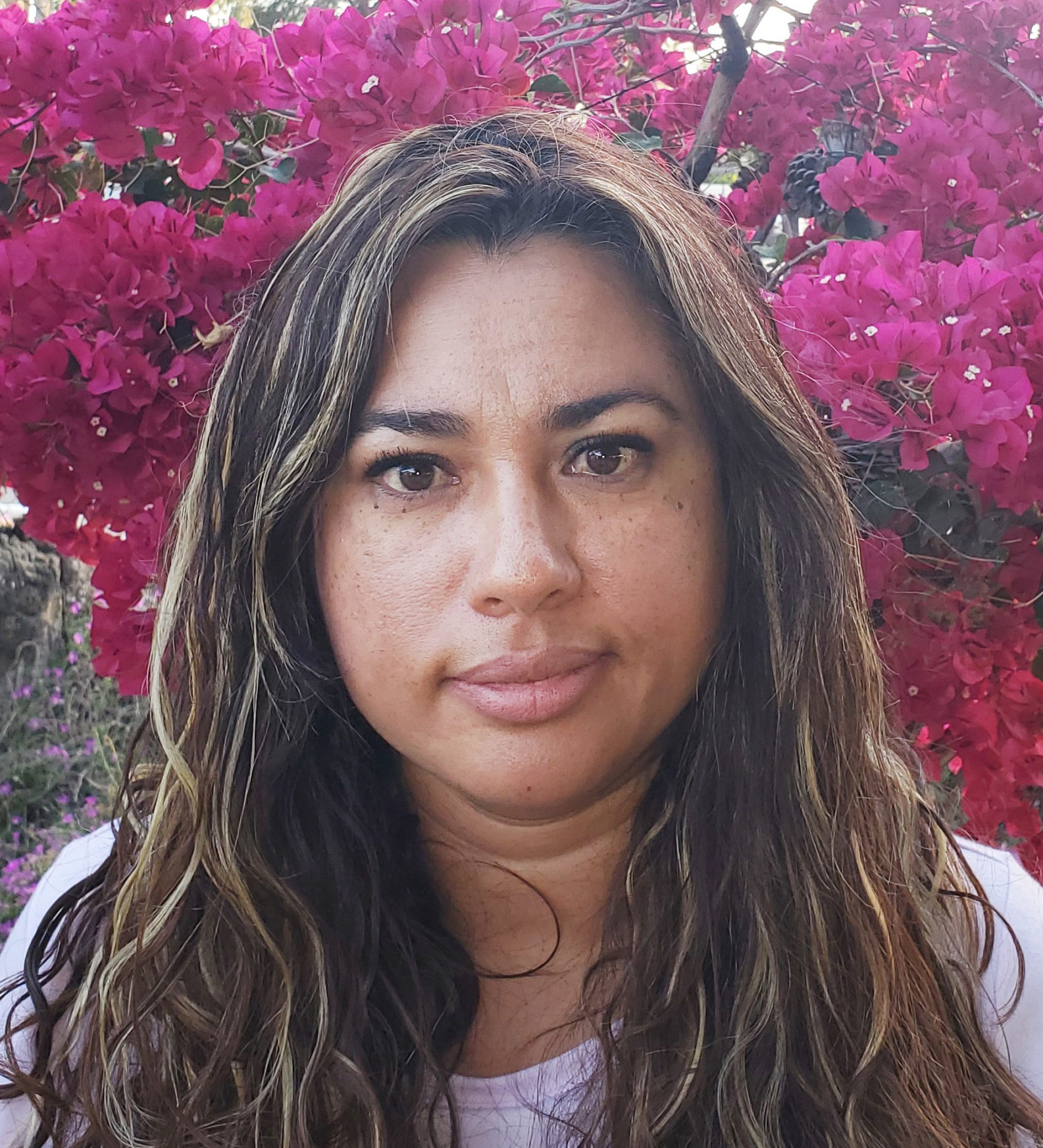
Candy Blanco
“For a lot of families, this wasn’t enough. It opened our eyes that a lot of people here are living in poverty.”
Students’ parents or guardians could pick up the food, no questions asked. Over time, the program was expanded for district employees to pick up food if necessary, which was the case when other family members lost their jobs.
“In the rain, the snow, the wind and heat, we handed out food, even during the summer,” says Blanco proudly. “We did everything we could to make sure that all our students were fed.”
Blanco marvels at how district employees pulled together as a team as never before. For her, that was the pandemic’s true silver lining.
“Classified [staff], teachers and administrators work in different capacities, but all of that changed in the pandemic. Everyone stepped up to help our kids. It was awesome how everyone came together.”
Blanco hopes that the same spirit of cooperation, respect and teamwork continues post-pandemic.
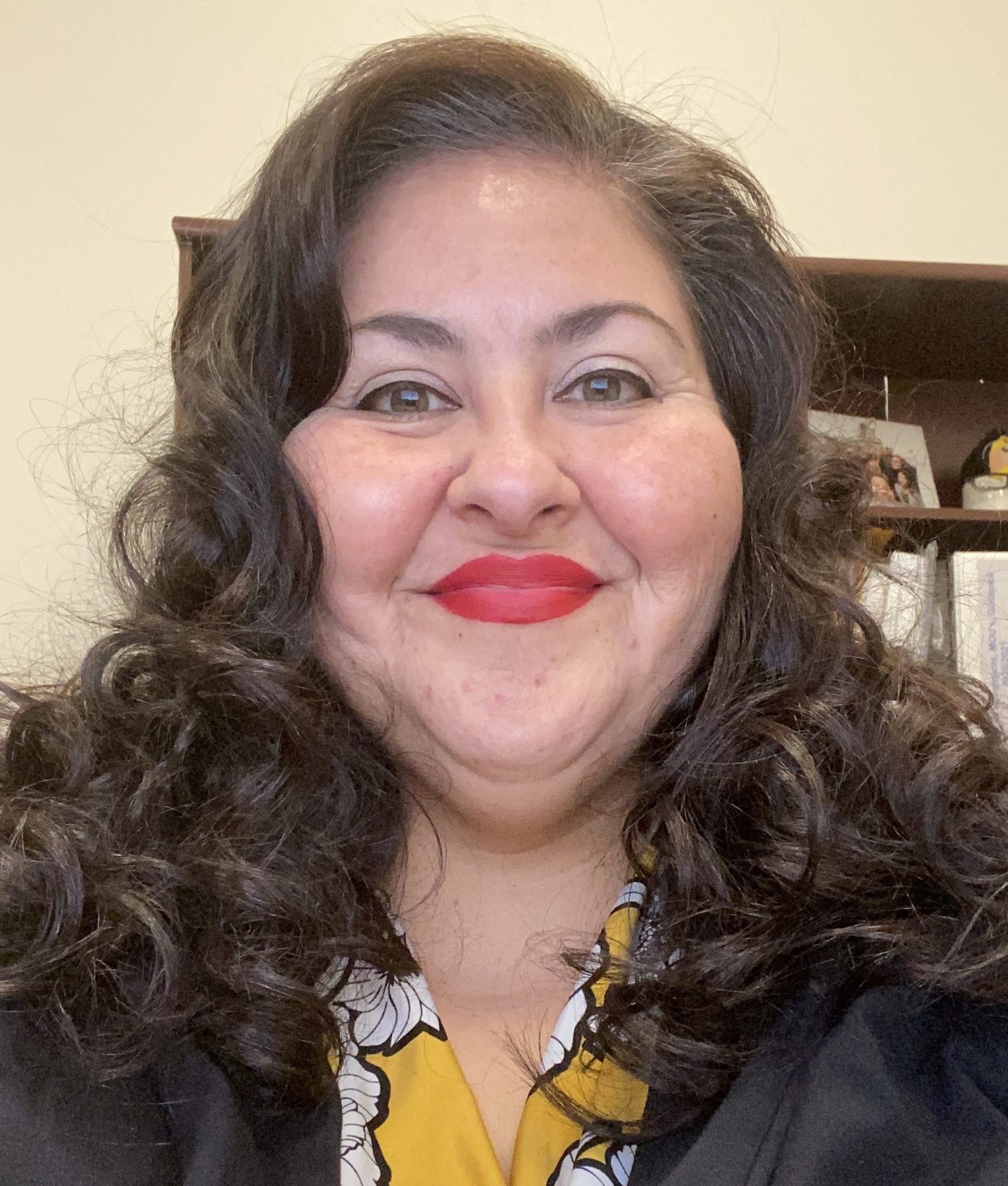
“I could focus on all the negative things. But there are also silver linings. The challenges we’ve faced have definitely made us stronger.”
—Yvonne Molles, San Bernardino County Teachers Association
Strengthening parent relationships
For Yvonne Molles, an early childhood special education preschool teacher for students with autism, the pandemic provided opportunities to work directly with parents in a way that has never happened before.
“I’m an early intervention specialist,” says Molles, president of the San Bernardino County Teachers Association. “Before the pandemic, we’d see parents once a year at Back to School Night and host seminars for them. But now we are Zooming directly into their homes. We’re teaching them while they are doing things with their children instead of sending them home with instructions. It’s more effective because parents are now able to understand exactly what they need to do as I guide them and help them in real time. They have become equipped with a whole new skill set.”
She hopes to continue working directly with parents when things get back to normal.
“They are much more successful helping their kiddos succeed when we collaborate together.”
Becoming union strong
Prior to the pandemic, says Molles, about 20 members attended union meetings. When the coronavirus forced her chapter to go virtual, she was pleasantly surprised to see attendance rise.
“Now we have between 50 and 180 members in attendance out of 326 members, which is a huge increase. We are doing member engagement activities like online bingo for fun, giving out gift cards as prizes. And through online meetings, we have enhanced the relationship we have with our superintendent.”
Recently, the executive board discussed amending the bylaws to allow virtual meetings to continue when the pandemic ends, which she thinks is an excellent idea.
“The pandemic has been rough,” says Molles. “And I could focus on all the negative things that have happened. But there are also some silver linings. The challenges we’ve faced have definitely made us stronger.”
Your Silver Lining
Have you found a few positives as an educator this past year? We’d love to share your story. Let us know in 250 words or less (subject to editing); email editor@cta.org with “Silver Lining” in the subject.